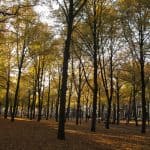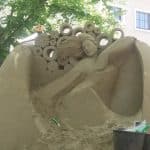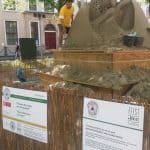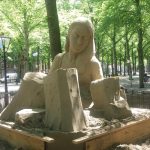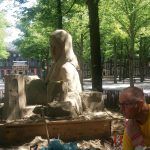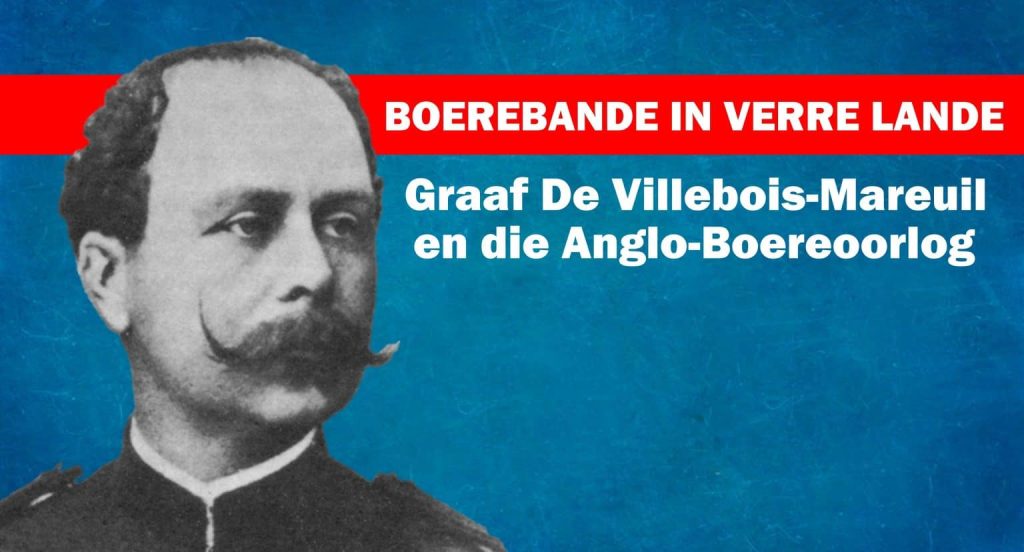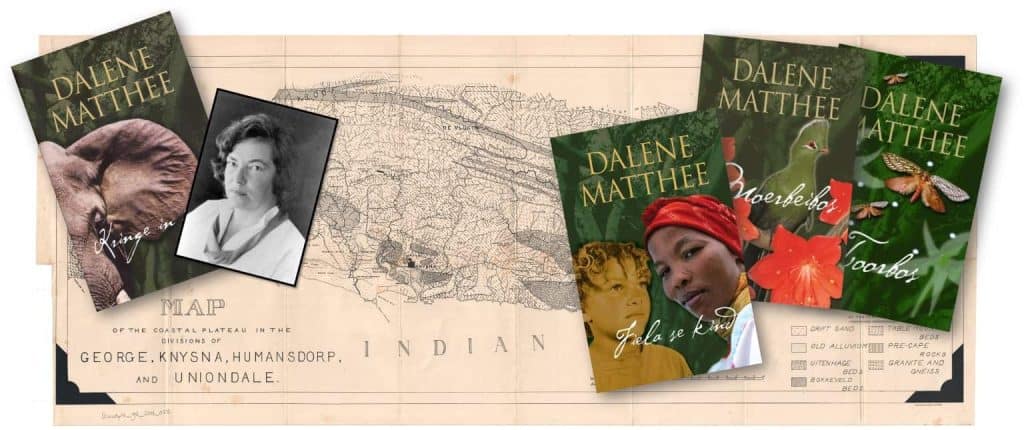In June 2018, I had the privilege of visiting The Hague in the Netherlands as part of AfriForum’s international awareness-raising campaign on expropriation without compensation. The hotel where I stayed is located near Lange Voorhout, a tree-lined avenue in the city. According to the information board, there are 314 lime trees, 11 Dutch elm trees and 7 horse chestnut trees. Trees have been planted there for more than 800 years and the oldest ones date from about 1745.
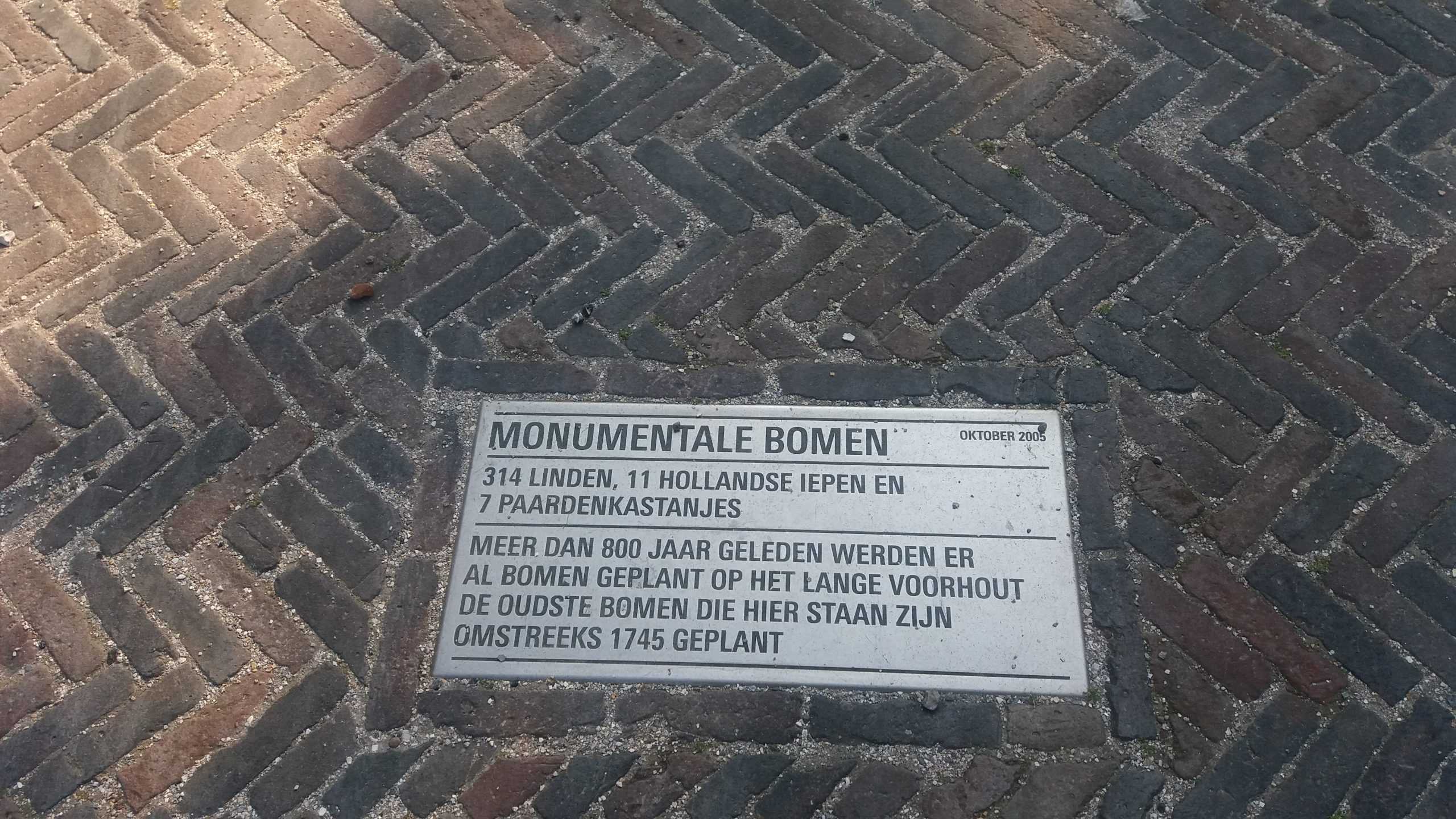
 Summer
Summer
Autumn

Winter
Regardless of the season, it is always delightful to walk along there on the way to an appointment or the station. This time it was even more so, as a group of nine international sand sculptors took part in the triennial Sand Sculpting World Championship from 4 to 12 June 2018 there. It was the first time the championship took place in the Netherlands. Participants came from, amongst others, Japan, Singapore, the United States, Mexico and Britain, and were selected by the World Sand Sculpting Academy (WSSA). This unique profession is their full-time job and they are financed through sponsorships, donations and, of course, prize money.
The Dutch seaside resort Scheveningen is 200 years old this year, and the theme of the competition, “200 years of sea, sand and …” linked up with this.
The sculptures that were created are 4 to 5 meters high. Artists could decide for themselves on their interpretation of the theme and set up information boards at their works to explain the symbolism. According to the USA participant with whom I talked, only the finest sand is suitable for this art form – thus, rather river than sea sand, which is more granular. Each participant used about 40 000 kg of sand from the Maas River. Only sand and water are used for the sculpture process. The sand is compressed so that it can survive gale and rain. After a sculpture has been completed, it does not need maintenance. Therefore, it does not have to be sprayed again. It can survive for a long time – in Japan there is a 30-year-old sculpture.
The sculptures will be available for viewing until 19 August 2018, after which it will be demolished and the sand will be reused for construction projects in the city.
Every day, one could see the artists’ progress. JOOheng Tan from Singapore called his creation “Dimensions of Beauty”. He admires the Dutch artist Vincent van Gogh and calls himself the 21st century Vincent Sand Gogh!
6 June 2018
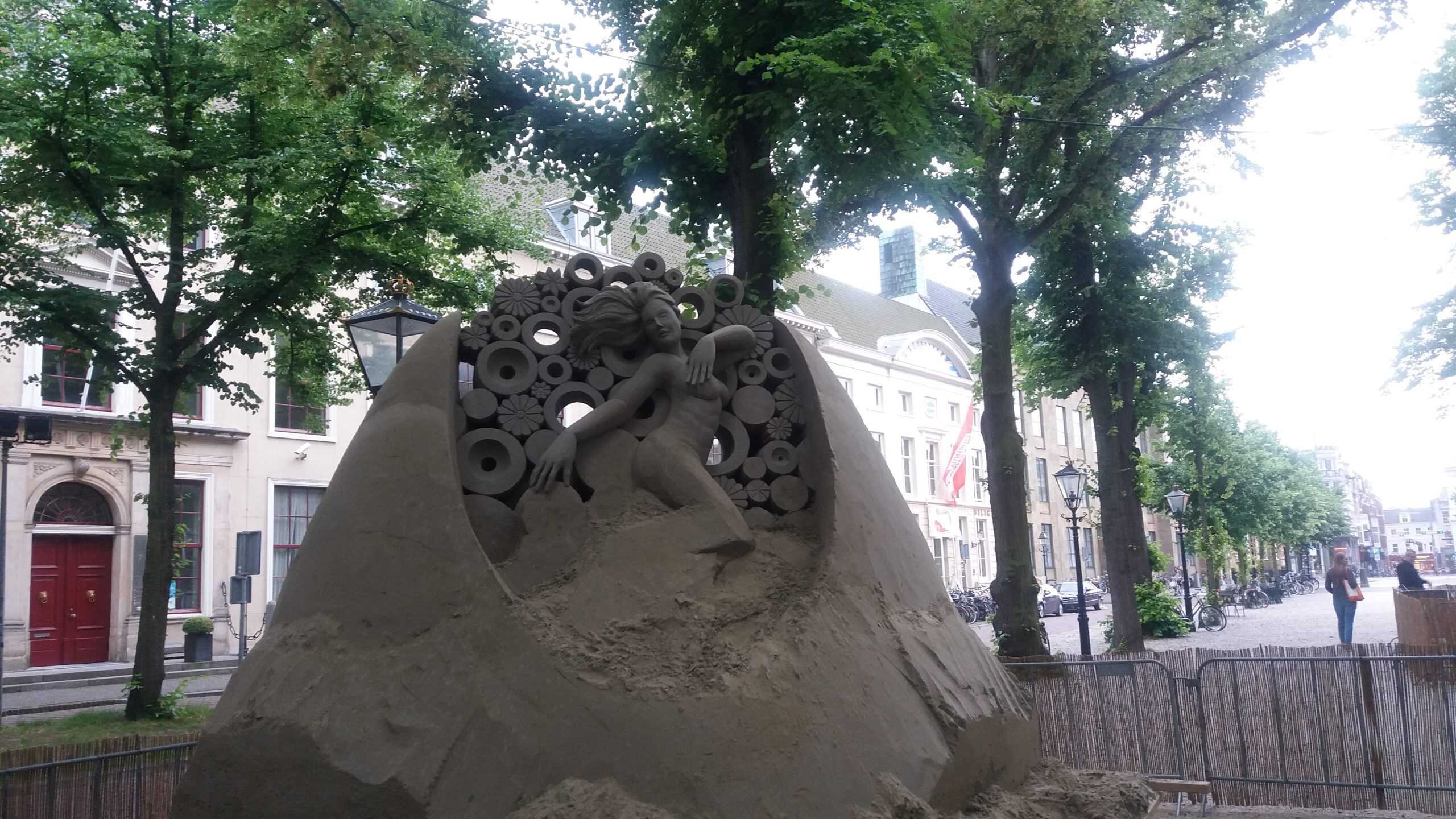 8 June 2018
8 June 2018
Benjamin Probanza of Mexico focused his “Love forever” on the stormy relationship of Frida Kahlo with Diego Rivera.
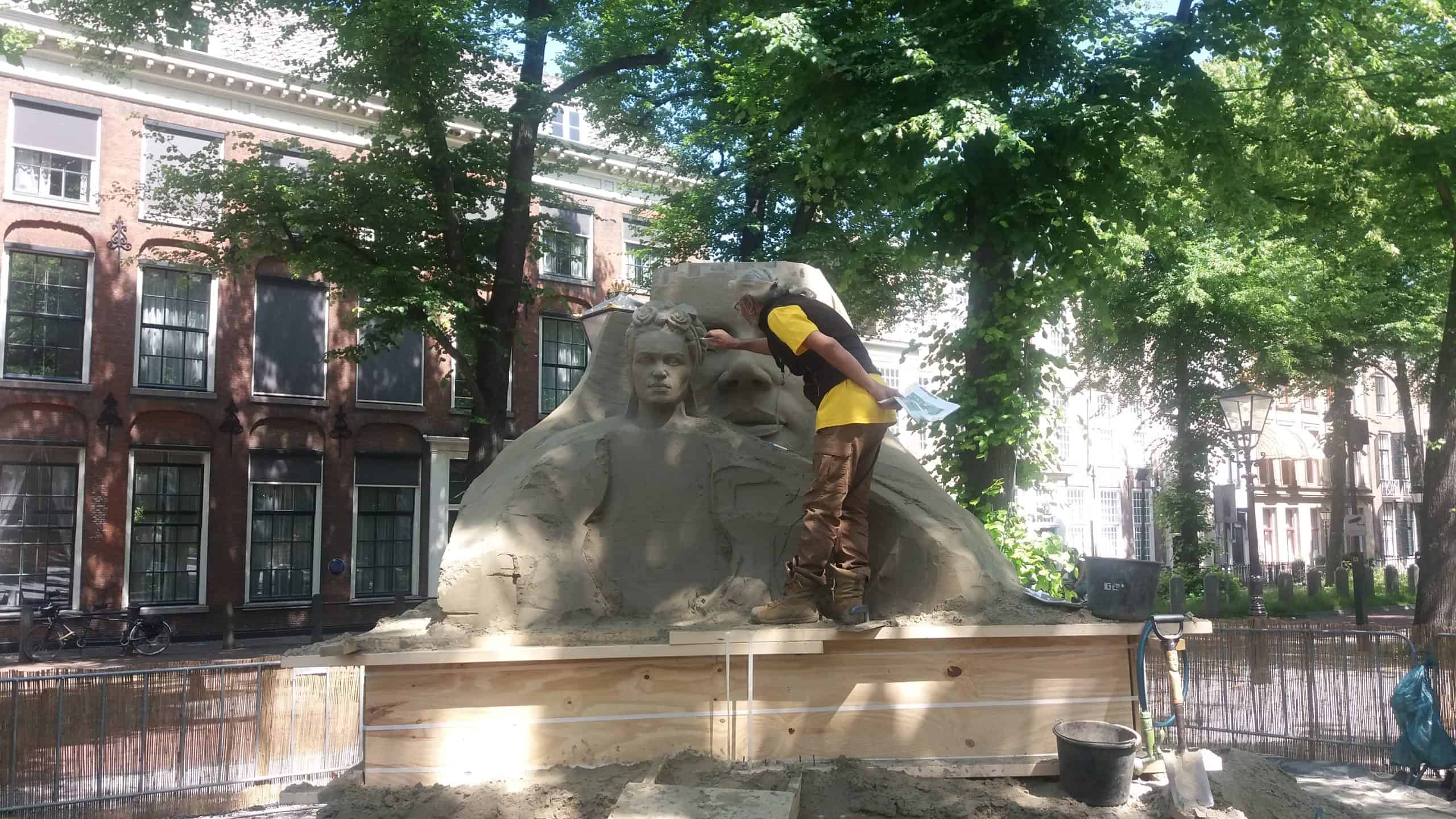 6 June 2018
6 June 2018
7 June 2018
My favourite was the woman created by Thomas Koet, the American contestant. He won the third prize.
6 June 2018
8 June 2018
The British-born Baldrick Buckle was the winner with his steamroller entitled “The Road to Scheveningen”.
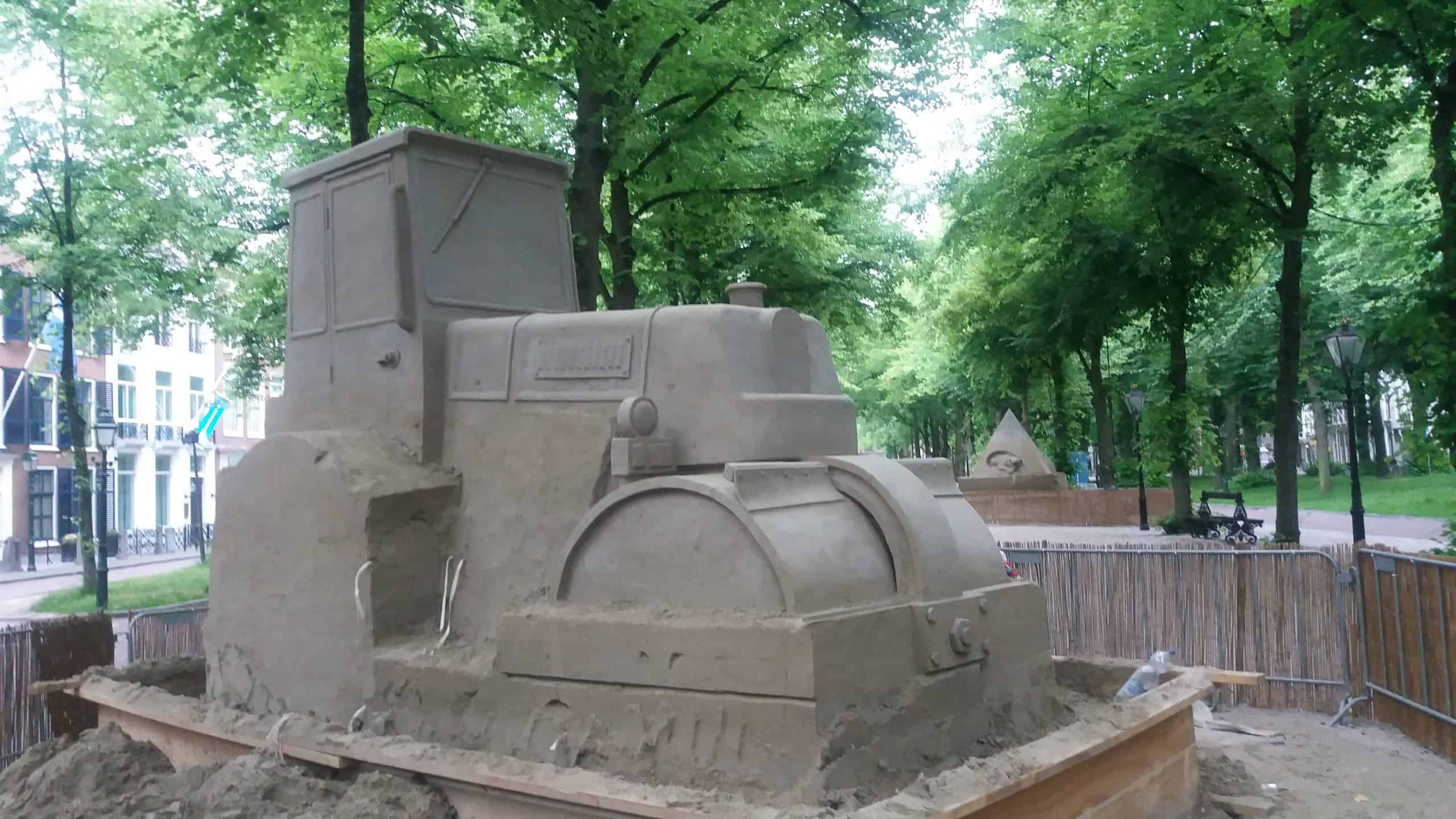
The detail of the steamroller, like the windscreen wipers, door latches and hinges were indeed mindboggling.
Unfortunately, I had to leave the Netherlands before the sculptures were completed, but there are many websites where those interested can view photographs. You may well read more at http://www.zandsculpturendenhaag.nl/nl/wereldkampioenschap-zandsculpturen-den-haag-2018/.
This lesser-known art form initially seems strange – so much time and resources are devoted to images that last only a few weeks. However, looking back, it is precisely the fragility and fugacity that capture one and that one will always remember.
My advice is: Don’t let an opportunity to visit such an exhibition slip by.




